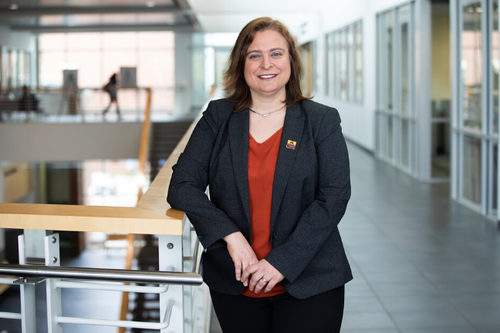
Biologics used to treat patients can be incredibly expensive, so there was significant hope that biosimilar drugs — which are highly similar to an existing biologic drug on the market — could serve as a less-costly substitute. However, new research from the University of Minnesota and Mayo Clinic finds that while physicians are indeed willing to prescribe these drugs, the cost savings are minor and there remains a number of regulatory barriers to their use.
The research, led by Professor Pinar Karaca-Mandic with the Carlson School of Management, was funded with a grant by the American Cancer Society and was published in the November issue of Health Affairs.
First available in the U.S. after the passage of the Affordable Care Act and its Biologics Price Competition and Innovation Act (BPCIA), biosimilars are biological drugs that are highly similar to another biologic. The concept is somewhat like generic versions of brand name drugs, but biologics and their biosimilars are much more complex than non-biologic medications. The BPCIA allows biosimilar manufacturers to use data from the original product’s approval application to establish the safety and effectiveness of the drug. The first approved biosimilar product in the U.S. was filgrastim-sndz. Based on filgrastim, it is used to prevent and treat a condition called neutropenia (i.e., a low number of a type of white blood cells). However, prior to filgrastim-sndz’s launch, tbo-filgrastim was approved in Europe as a biosimilar to filgrastim. In the U.S., because there was no approval process for biosimilars, it was introduced here as a “related drug substance,” though its uptake rate was low.
Previous research showed that filgrastim uptake declined 40% among Medicare patients after the introduction of filgrastim-sndz, but there was little information available to know if patients on private insurance or Medicare Advantage plans were also seeing declines in filgrastim uptake. In addition, the study noted the way commercial insurance reimburses for prescription drugs sometimes disincentivizes the use of lower-cost products.
Using anonymized claims billing data from commercial and Medicare Advantage insurance plans, researchers identified how many patients were prescribed and how much they paid for filgrastim, filgrastim-sndz and tbo-filgrastim.
The study found:
- use of filgrastim consisted of about 88% of prescriptions used to treat neutropenia in March 2015, the month its biosimilar was first approved;
- within three years, filgrastim use plummeted to 40%, filgrastim-sndz accounted for 47% of all administrations, and tbo-filgrastim stayed largely flat at 13%;
- while the biosimilar filgrastim-sndz was 31% cheaper than the original for patients commercially insured when it launched, it shrank to being 23% cheaper by 2018;
- the cost of filgrastim and filgrastim-sndz cost nearly the same on Medicare Advantage plans at the biosimilar’s launch, but the price advantage for the biosimilar grew over time.
Filgrastim makes for an interesting case study because of how market responses differed between tbo-filgrastim, the European biosimilar approved under the biologics license, and filgrastim-sndz, according to Molly Moore Jeffery, a study co-author and research associate in the Department of Health Sciences Research at Mayo Clinic.
"We found that the market share and price of the originator drug didn’t respond much to that new entrant," says Jeffery, who is also the scientific director of research in emergency medicine at Mayo Clinic. "It wasn’t until the official U.S. biosimilar was approved that we saw a big shift away from the originator drug. It will be interesting in future work to understand how doctors and patients perceive biosimilar safety and effectiveness and how that drives the market for biosimilars.”
The biosimilar market is one to watch, as it offers both promise and challenges ahead, according to Karaca-Mandic.
“Biosimilar uptake was fast, and there were cost savings,” she says. “However, there are still major barriers. For example, there are legal battles by originator biologics that delay the entry of biosimilars. In addition, originator biosimilars offer rebates to health plans to cover originator biologics as the preferred drugs in the health plan coverage policies.”
- Categories:
- Health




